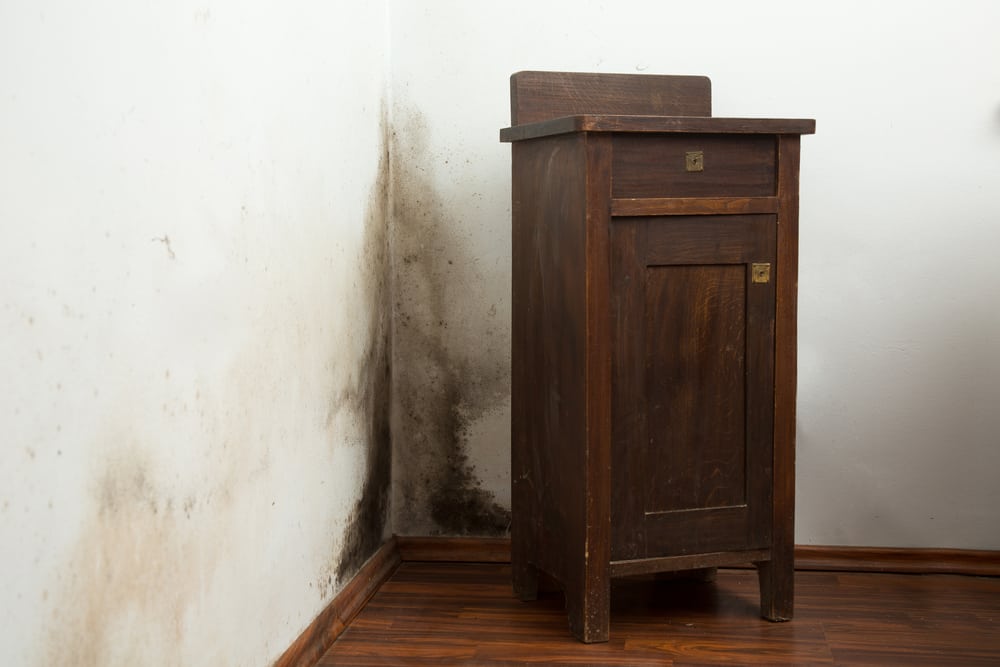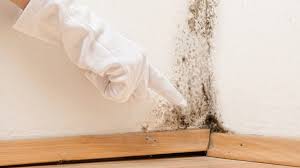How to Know if Mold Is in Your Walls
Mold often grows out of sight in wall cavities due to water problems like flooding or leaks. Before you know it, it creates a toxic environment in your home, compromising the indoor air. The good news is that even hidden mold leaves behind clues. You can find out if mold is growing in your walls in several ways.
Here is how to spot mold that grows inside your walls.
Moisture
If your home has suffered severe water damage, mold will grow in your walls if the water wasn’t removed within 24-48 hours. If water reached drywall, the best practice is to cut it one foot above the water line.
Other water problems like leaking pipes may also trap moisture inside your walls. Even in these cases where leaks are visible, moisture can get inside walls, providing mold a place to grow. Be aware of signs that drywalls are moist such as:
- water stains
- dark rings
- discoloration
- deterioration like peeling, bubbling or cracking of the paint or wallpaper
Moreover, if the walls are bowed, bulging or warped, they most likely contain moisture. Another clue is if the surface of walls feels wet or damp.
Visible Signs of Mold
First of all, if the wall is rotting, it likely has mold underneath it. In less severe cases, mold might not be that noticeable. Inspect the walls and check for mold on walls behind furniture and along baseboards too.
Mold can have different colors and textures, so be sure to recognize them. Mold can be black, green, gray, white, or brown. Mold can even appear orange, pink or purple when it grows behind vinyl wallpaper. Another sign of visible mold is discoloration of walls, even if it has been painted over. If the water damage inside the walls persists, mold will show signs on the surface.
Musty Smell
If you don’t see signs of mold but you can smell it, it may be hidden in your walls. A musty smell is a good indicator that mold is growing in your home. The smell of mold feels earthy, like rotting leaves or decaying wood in a dense, damp forest. If you think there’s mold in your walls, get on your hands and knees and smell the electrical outlets. This might sound silly, but it may help you sense mold if it’s growing within walls. Outlets have better access to the area behind walls. Thus, smelling them can help identify the mold problem.

Mold Warning Signs: Allergies and Other Health Issues
When someone has mold in their home, they usually show allergy-related symptoms. If you’re not sure whether your allergy-like symptoms are caused by mold in your home, then consider this question: do your symptoms get better once you go outdoors or leave your home? If so, then there is good chance that mold is the culprit.
Symptoms of mold allergies include:
- Coughing
- Sneezing
- Sore, itchy throat
- Congestion and runny nose
- Sinus headaches
- Wheezing and difficulty breathing
- Itchy, watery eyes
- Irritated, itchy skin
Some forms of household mold are toxic, causing serious, life-threatening illness. These highly-dangerous molds might cause symptoms such as bleeding, internal organ damage, mental impairment, cancer, and even death.

Are Home Mold Test Kits Reliable?
Mold is a common problem that most homeowners have to deal with from time to time. In a bid to rid their houses of this menace, some people result in using DIY home mold test kits. That being said, the question that bothers most people is how effective home mold test kits are. The truth is that a home mold test kit is not reliable since it only reveals the presence of mold in the house but fails to give you detailed information about the problem. Among the information that the kit will not provide you with is the source of moisture, the type of mold present, where the mold is located and what you can do to remediate and prevent future mold infestation.
Mold Type Information
There are two types of mold: harmful mold, which is mostly the black mold, and the non-harmful mold that grows on food that is spoiling. A home mold test kit will only confirm the presence of mold in your house, but will not tell you what type it is. This limited information can cost you lots of money since you may invite a professional to remove the mold, only to discover that the mold is not harmful. On the flipside, you may be tempted to think that the mold is the non-harmful type, only to find out that the mold is the harmful black mold, a time in which, it might be too late and the damage is too much.
Source of Moisture Information
Mold thrives where there is moisture and warmth, hence the need to identify the source of moisture. Unfortunately, home mold test kits do not identify the source of moisture, which is the start to mold remediation process. Contrary to a professional who goes to the root cause of the mold problem, home mold test kits only confirm the presence of mold in the house but do not tell the cause of the mold. For this reason, you have to call in professional mold services so that they can identify the source of moisture. This is a bit expensive since these are two different costs.

Levels of Mold
A home mold test kits is simply a dish that traps mold spores that are hovering in the atmosphere. Regardless of the high number of mold spores trapped in the jar, this does not tell how much the infestation is. The jar has to be transported to the lab where a professional analyses the spores to determine the levels of mold infestation. The analysis comes at an extra cost, rendering this type of mold test expensive. Failure to know the levels of mold is risky because you may never know how much damage the mold has caused, and by the time you realize, it might be too late.
Remediation of the Mold
Contrary to a mold professional who identifies the mold and goes ahead to remove it, a home mold test kit does not do this; it only confirms the presence of mold. After collecting the mold spores in a jar, the kit is transported to a test lab for analysis. You then have to find professional mold removal services at an extra cost. Foregoing a home mold test kit presents you with one package; testing and removal, something that saves you money and inconvenience of looking for a good professional. Most importantly, a professional does effective testing to uncover the location of the mold and the source of moisture.
Preventive Measures
The best thing with hiring professional mold removal services is that on top of removing the mold, they will offer expert advice on what you should and not do to prevent future infestation. By using the DIY home mold test kit, you miss a chance of getting this important piece of information. Without this information, you will spend so much on the remedying process and after a short while, you will spend even more money when the mold grows again. Only that this time around, the damage may be even worse than the previous time.
Although the role of a home mold test kit is very limited, its effectiveness cannot be ignored. However, for someone working on a budget, professional mold services are your best bet since they present you with testing and remediation as a single package. Even as you do that, vet the mold experts by checking for their customer reviews and rating. Mold is very risky to your health and can cause massive structural damage and so you do not want to chances.
How are mold allergies and exposure diagnosed?
There are no proven tests that show when or where you may have been exposed to mold. However, your doctor may check for mold allergies by reviewing your symptoms and performing one of the following tests:
- Blood test. Your doctor takes a blood sample and then sends it to a laboratory to measure the number of certain antibodies, which can indicate your immune system’s sensitivity to different mold species.
- Skin prick test. Your doctor takes small amounts of mold and applies it to your skin using a tiny needle. Your skin will break out in bumps, a rash, or hives if you’re allergic to that type of mold.